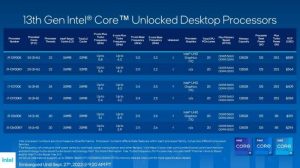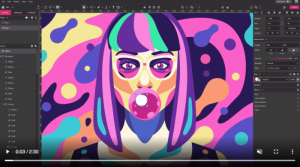
Step into the world of multimedia design software where creativity knows no bounds. From graphic design to video editing, explore the top tools that will elevate your projects to new heights. Get ready to dive into a realm of endless possibilities and unleash your artistic vision!
Best Multimedia Design Software
Multimedia design software plays a crucial role in creating visually appealing graphics, animations, videos, and other multimedia content. Let’s explore some of the top multimedia design software options available in the market and their key features.
Adobe Creative Cloud
Adobe Creative Cloud is a powerhouse of multimedia design tools that include Photoshop, Illustrator, InDesign, Premiere Pro, After Effects, and more. Key features of Adobe Creative Cloud include a wide range of design tools, seamless integration between different software, and regular updates to keep up with industry trends.
Canva
Canva is a user-friendly multimedia design tool that is perfect for beginners and professionals alike. It offers a wide variety of templates, stock images, and fonts to create stunning designs. Canva’s key features include drag-and-drop functionality, collaboration tools, and a vast library of design elements.
CorelDRAW Graphics Suite
CorelDRAW Graphics Suite is a popular choice among graphic designers and illustrators. It offers tools for vector illustration, layout, photo editing, and typography. Key features of CorelDRAW Graphics Suite include advanced vector tools, flexible file compatibility, and customizable workspace.
Blender
Blender is a versatile multimedia design software that is known for its 3D modeling, animation, and rendering capabilities. It is open-source and free to use, making it a favorite among independent artists and animators. Key features of Blender include a powerful rendering engine, sculpting tools, and support for simulations and visual effects.
Projects Created Using Multimedia Design Software
- Designing logos, brochures, and marketing materials
- Creating animations and motion graphics for videos
- Developing 3D models and visualizations
- Editing photos and creating digital artwork
Explore these multimedia design software options to find the best fit for your creative projects!
Computer Repair and Consulting

In today’s digital age, where computers play a crucial role in our personal and professional lives, the importance of computer repair and consulting services cannot be overstated. These services are essential for ensuring that our devices are functioning optimally and securely.
Common Computer Issues Requiring Professional Repair
- Hardware malfunctions such as a faulty hard drive, broken screen, or malfunctioning motherboard.
- Software issues like viruses, malware, or corrupted operating systems.
- Network problems that affect internet connectivity or data transfer speeds.
- Overheating due to dust buildup or a malfunctioning cooling system.
Tips for Maintaining Computer Health
- Regularly clean your computer to prevent dust buildup and overheating.
- Update your operating system and software to ensure the latest security patches and bug fixes.
- Install antivirus software and perform regular scans to protect against malware.
- Backup your important files and data to prevent loss in case of hardware failure.
Role of Consulting Services in Optimizing Computer Performance
Consulting services play a crucial role in helping individuals and businesses optimize their computer performance by:
- Assessing current systems and recommending upgrades or replacements to improve efficiency.
- Providing guidance on software and hardware choices to meet specific needs and budget constraints.
- Offering training and support to ensure users are utilizing their devices to their full potential.
- Implementing security measures to protect against cyber threats and data breaches.
Data Communication
Data communication is the process of exchanging data between two devices through a transmission medium. In today’s digital age, data communication plays a crucial role in connecting people, devices, and systems worldwide. It enables the transfer of information, such as text, images, videos, and more, over networks, facilitating communication and collaboration.
Methods of Data Communication
- Wired Communication: Utilizes physical cables, such as Ethernet or USB, to transmit data between devices.
- Wireless Communication: Relies on wireless signals, like Wi-Fi or Bluetooth, to send and receive data without the need for physical connections.
- Optical Communication: Uses light signals to transmit data through fiber optic cables, enabling high-speed and long-distance communication.
Importance of Data Communication Protocols
- Data communication protocols are a set of rules that govern the exchange of data between devices in a network.
- They ensure data integrity, reliability, and security during transmission, preventing errors and unauthorized access.
- Common protocols include TCP/IP, HTTP, FTP, and others, each serving specific communication needs.
Utilization of Data Communication in Everyday Tasks
- Sending Emails: Data communication enables the transfer of emails between users worldwide, facilitating instant communication.
- Video Calls: Platforms like Zoom or Skype rely on data communication to transmit audio and video data in real-time during video calls.
- Online Shopping: E-commerce websites use data communication to process transactions securely, ensuring safe online shopping experiences.
Computers E-Books
E-books have revolutionized the way computer knowledge is shared, offering a convenient and accessible platform for enthusiasts to learn and explore various computer-related topics. With the advancement of technology, e-books have become an essential resource for those looking to enhance their skills and expertise in the field of computers.
Benefits of E-Books for Computer-Related Topics
- Portability: E-books can be easily accessed on various devices, allowing users to carry a vast library of computer-related books wherever they go.
- Searchability: E-books often come with search functions, making it easier for readers to find specific information quickly.
- Interactive Features: Some e-books include interactive elements such as videos, quizzes, and simulations to enhance the learning experience.
- Cost-Effective: E-books are generally more affordable than printed books, making them a cost-effective option for computer enthusiasts.
Must-Read E-Books for Computer Enthusiasts
- “The Pragmatic Programmer” by Andrew Hunt and David Thomas
- “Clean Code: A Handbook of Agile Software Craftsmanship” by Robert C. Martin
- “Code: The Hidden Language of Computer Hardware and Software” by Charles Petzold
- “Cracking the Coding Interview” by Gayle Laakmann McDowell
How E-Books Enhance Learning in the Field of Computers
- E-books offer interactive features such as videos, quizzes, and simulations that engage readers and enhance understanding.
- Readers can easily access and download e-books instantly, eliminating the need to wait for physical copies to arrive.
- E-books can be updated and revised easily, ensuring that readers have access to the most current information in the fast-paced world of technology.
- With e-books, readers can customize their reading experience by adjusting font sizes, colors, and layouts to suit their preferences.
Graphics and Multimedia
Graphics and multimedia are closely related but distinct concepts in the world of design and technology. While graphics refer to visual elements such as images, icons, and illustrations, multimedia encompasses a broader range of content that includes text, audio, video, and interactive elements.
Differentiate between graphics and multimedia content:
Graphics are static visual elements used to enhance the visual appeal of a design or convey information through images. On the other hand, multimedia content combines various forms of media, including graphics, audio, video, and interactive elements, to create a dynamic and engaging user experience.
Explain the role of graphics in multimedia design:
Graphics play a crucial role in multimedia design by enhancing the visual appeal of the content and conveying information in a visually engaging manner. They help create a cohesive and visually appealing design that captures the audience’s attention and communicates the message effectively.
Discuss the impact of multimedia content in various industries:
Multimedia content has revolutionized the way businesses communicate with their audience, making information more accessible and engaging. Industries such as marketing, education, entertainment, and e-commerce have leveraged multimedia content to create immersive experiences that drive engagement, sales, and brand awareness.
Share trends in graphics and multimedia design:
Minimalism
Clean and simple designs that focus on essential elements.
3D Graphics
Increasing use of three-dimensional elements to create depth and realism.
Animation
Dynamic animations and transitions to enhance user experience.
Virtual Reality (VR) and Augmented Reality (AR)
Immersive technologies that are reshaping multimedia design.
Responsive Design
Designing content that adapts to different devices and screen sizes for a seamless user experience.
Computers Hardware
When it comes to computers, hardware plays a crucial role in determining the overall performance and capabilities of the system. From the processor to the memory, each component has its own unique function and importance in ensuring smooth operation.
Essential Hardware Components
- Processor (CPU): Often referred to as the brain of the computer, the processor is responsible for executing instructions and performing calculations.
- Memory (RAM): Random Access Memory stores data that the processor needs to access quickly, allowing for faster performance.
- Storage (Hard Drive/SSD): Storage devices hold all the data and programs on a computer, providing space for files and applications.
- Graphics Card (GPU): Responsible for rendering images and videos, the graphics card is essential for graphic-intensive tasks such as gaming or video editing.
- Motherboard: The motherboard acts as a central hub, connecting all the components of a computer system and allowing them to communicate with each other.
Importance of Hardware Compatibility
Hardware compatibility is crucial in ensuring that all the components of a computer system work together seamlessly. When components are not compatible, it can lead to system instability, errors, or even hardware damage. It is essential to check compatibility when upgrading or building a computer to avoid any issues.
Latest Advancements in Computer Hardware Technology
- Advanced Processors: Manufacturers are constantly pushing the boundaries of processor technology, with faster speeds and more cores being introduced to handle demanding tasks.
- SSD Technology: Solid State Drives offer faster read/write speeds compared to traditional hard drives, leading to quicker boot times and improved overall performance.
- Graphics Card Innovations: Graphics cards are evolving to support higher resolutions and frame rates, making them ideal for gaming and content creation.
- Connectivity Options: The introduction of technologies like USB-C and Thunderbolt allows for faster data transfer speeds and more versatile connectivity options.
Tips for Upgrading Computer Hardware Effectively
- Research Before Buying: Make sure to research compatibility and performance benchmarks before purchasing new hardware components.
- Consider Your Needs: Determine what tasks you will be using your computer for and invest in hardware that will support those activities effectively.
- Follow Proper Installation Procedures: When upgrading hardware, follow manufacturer guidelines and ensure components are installed correctly to avoid damage.
- Regular Maintenance: Keep your computer clean and free of dust to prevent overheating and prolong the lifespan of your hardware components.
Summary

In conclusion, the world of multimedia design software offers a plethora of options to bring your creative ideas to life. With the right tools at your fingertips, there are no limits to what you can achieve. So, go ahead, explore, create, and let your imagination run wild in the digital realm of multimedia design!
General Inquiries
Which multimedia design software is best for beginners?
For beginners, software like Canva or Adobe Spark are great options as they offer intuitive interfaces and plenty of templates to kickstart your design journey.
What are the key features to look for in multimedia design software?
Some key features to consider are ease of use, a variety of tools for different design aspects, compatibility with various file formats, and good customer support.
Can multimedia design software be used for both personal and professional projects?
Absolutely! Whether you’re creating a social media graphic for fun or working on a professional marketing campaign, multimedia design software caters to all kinds of projects.





